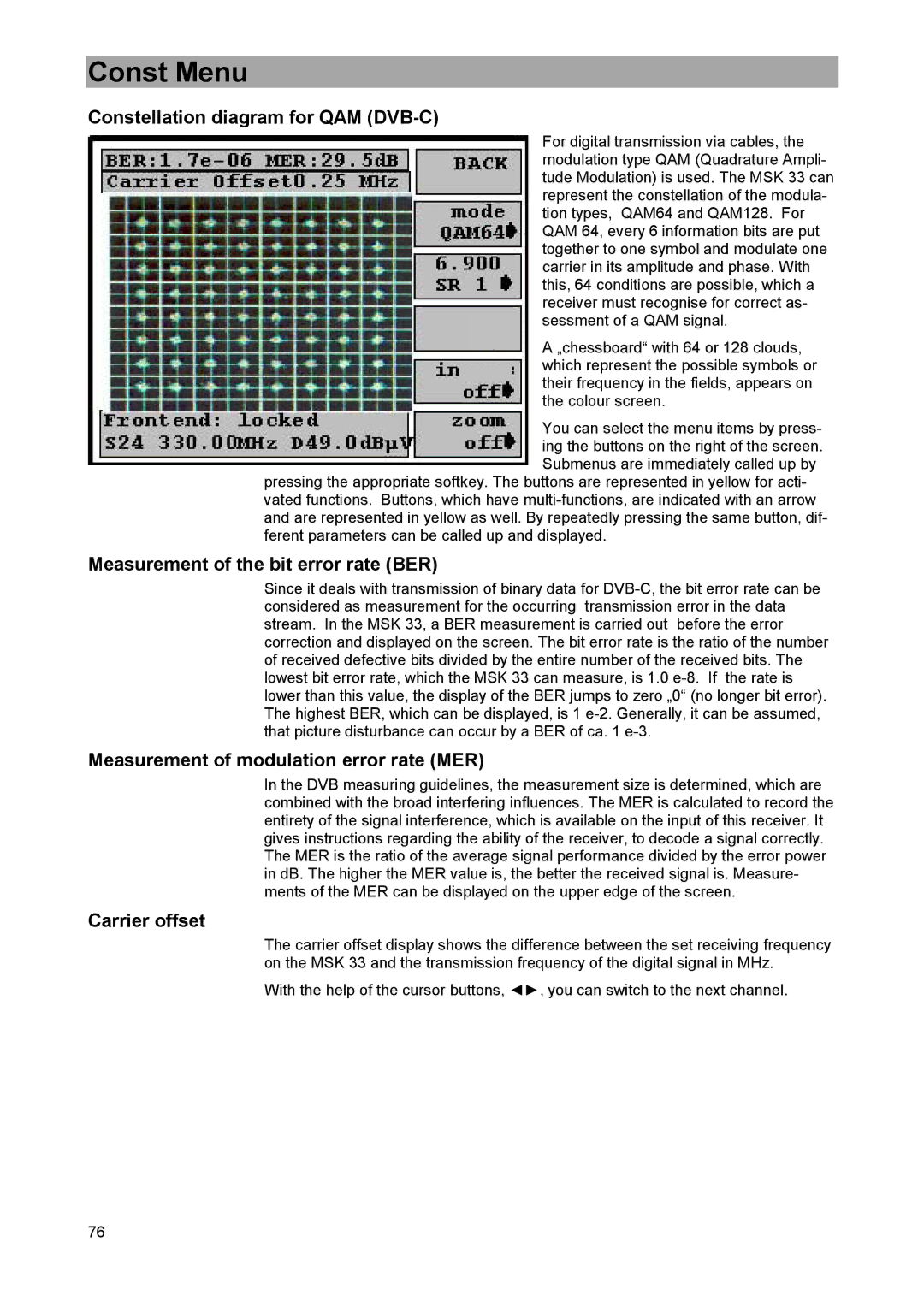
Const Menu
Constellation diagram for QAM (DVB-C)
For digital transmission via cables, the modulation type QAM (Quadrature Ampli- tude Modulation) is used. The MSK 33 can represent the constellation of the modula- tion types, QAM64 and QAM128. For QAM 64, every 6 information bits are put together to one symbol and modulate one carrier in its amplitude and phase. With this, 64 conditions are possible, which a receiver must recognise for correct as- sessment of a QAM signal.
A „chessboard“ with 64 or 128 clouds, which represent the possible symbols or their frequency in the fields, appears on the colour screen.
You can select the menu items by press- ing the buttons on the right of the screen. Submenus are immediately called up by
pressing the appropriate softkey. The buttons are represented in yellow for acti- vated functions. Buttons, which have
Measurement of the bit error rate (BER)
Since it deals with transmission of binary data for
Measurement of modulation error rate (MER)
In the DVB measuring guidelines, the measurement size is determined, which are combined with the broad interfering influences. The MER is calculated to record the entirety of the signal interference, which is available on the input of this receiver. It gives instructions regarding the ability of the receiver, to decode a signal correctly. The MER is the ratio of the average signal performance divided by the error power in dB. The higher the MER value is, the better the received signal is. Measure- ments of the MER can be displayed on the upper edge of the screen.
Carrier offset
The carrier offset display shows the difference between the set receiving frequency on the MSK 33 and the transmission frequency of the digital signal in MHz.
With the help of the cursor buttons, ◄►, you can switch to the next channel.
76
